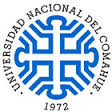JavaScript is disabled for your browser. Some features of this site may not work without it.
| dc.creator | Barril, Patricia Angelica | |
| dc.creator | Pianciola, Luis Alfredo | |
| dc.creator | Mazzeo, Melina | |
| dc.creator | Ousset, Maria Julia | |
| dc.creator | Jaureguiberry, María Virginia | |
| dc.creator | Alessandrello, Mauricio | |
| dc.creator | Sanchez, Gloria | |
| dc.creator | Oteiza, Juan Martín | |
| dc.date | 2021-02 | |
| dc.date.accessioned | 2021-12-01T13:30:19Z | |
| dc.date.available | 2021-12-01T13:30:19Z | |
| dc.identifier | http://rdi.uncoma.edu.ar/handle/uncomaid/16527 | |
| dc.identifier.issn | 0048-9697 | es_ES |
| dc.description.abstract | Wastewater-based epidemiology (WBE) is a useful tool that has the potential to act as a complementary ap-proach to monitor the presence of SARS-CoV-2 in the community and as an early alarm system for COVID-19 out-break. Many studies reported low concentrations of SARS-CoV-2 in sewage and also revealed the need formethodological validation for enveloped viruses concentration in wastewater. The aim of this study was to eval-uate different methodologies for the concentration of viruses in wastewaters and to select and improve an optionthat maximizes the recovery of SARS-CoV-2. A total of 11 concentration techniques based on different principleswere evaluated: adsorption-elution protocolswith negatively chargedmembranesfollowedbypolyethylenegly-col (PEG) precipitation (Methods 1–2), PEG precipitation (Methods 3–7), aluminum polychloride (PAC)floccu-lation (Method 8), ultrafiltration (Method 9), skim milkflocculation (Method 10) and adsorption-elution withnegatively charged membrane followed by ultrafiltration (Method 11). To evaluate the performance of theseconcentration techniques, feline calicivirus (FCV) was used as a process control in order to avoid the risk associ-ated with handling SARS-CoV-2. Two protocols, one based on PEG precipitation and the other on PACfloccula-tion, showed high efficiency for FCV recovery from wastewater (62.2% and 45.0%, respectively). These twomethods were then tested for the specific recovery of SARS-CoV-2. Both techniques could recover SARS-CoV-2from wastewater, PACflocculation showed a lower limit of detection (4.3 × 102GC/mL) than PEG precipitation (4.3 × 103GC/mL). This work provides a critical overview of current methods used for virus concentration inwastewaters and the analysis of sensitivity for the specific recovery of SARS-CoV-2 in sewage. The data obtainedhere highlights the viability of WBE for the surveillance of COVID-19 infections in the community. | es_ES |
| dc.format | application/pdf | es_ES |
| dc.format.extent | pp.1-7 | es_ES |
| dc.language | eng | es_ES |
| dc.publisher | Elsevier | es_ES |
| dc.relation.uri | https://www.sciencedirect.com/science/article/pii/S0048969720376361 | es_ES |
| dc.rights | Atribución-NoComercial-CompartirIgual 2.5 Argentina | es_ES |
| dc.rights.uri | https://creativecommons.org/licenses/by-nc-sa/2.5/ar/ | es_ES |
| dc.source | Science of The Total Environment Volume 756, 20 February 2021 | es_ES |
| dc.subject | COVID-19 surveillance | es_ES |
| dc.subject | Sewage | es_ES |
| dc.subject | Wastewater-based epidemiology | es_ES |
| dc.subject | Viral concentration methods | es_ES |
| dc.subject | COVID-19 | es_ES |
| dc.subject.other | Ciencias Sociales | es_ES |
| dc.subject.other | Ciencias Aplicadas | es_ES |
| dc.title | Evaluation of viral concentration methods for SARS-CoV-2 recovery from wastewaters | es_ES |
| dc.type | Articulo | es |
| dc.type | article | eu |
| dc.type | acceptedVersion | eu |
| dc.description.fil | Fil: Barril, Patricia Angelica. Laboratorio de Microbiología de los Alimentos. Centro de Investigación y Asistencia Técnica a la Industria; Argentina. | es_ES |
| dc.description.fil | Fil: Barril, Patricia Angelica. Consejo Nacional de Investigaciones Científicas y Técnicas; Argentina. | es_ES |
| dc.description.fil | Fil: Pianciola, Luis Alfredo. Laboratorio Central “Mg. Luis Alfredo Pianciola”. Ministerio de Salud de la Provincia de Neuquén; Argentina. | es_ES |
| dc.description.fil | Fil: Mazzeo, Melina. Laboratorio Central “Mg. Luis Alfredo Pianciola”. Ministerio de Salud de la Provincia de Neuquén; Argentina. | es_ES |
| dc.description.fil | Fil: Ousset, Maria Julia. Universidad Nacional del Comahue. Centro de Investigaciones en Toxicologia Ambiental y Agrobiotecnologia del Comahue; Argentina. | es_ES |
| dc.description.fil | Fil: Jaureguiberry, María Virginia. Laboratorio de Microbiología de los Alimentos. Centro de Investigación y Asistencia Técnica a la Industria; Argentina. | es_ES |
| dc.description.fil | Fil: Jaureguiberry, María Virginia. Consejo Superior de Investigaciones Científicas; Argentina. | es_ES |
| dc.description.fil | Fil: Alessandrello, Mauricio. Laboratorio de Microbiología de los Alimentos. Centro de Investigación y Asistencia Técnica a la Industria; Argentina. | es_ES |
| dc.description.fil | Fil: Sanchez, Gloria. Laboratorio de Microbiología de los Alimentos. Centro de Investigación y Asistencia Técnica a la Industria; Argentina. | es_ES |
| dc.description.fil | Fil: Sanchez, Gloria. Consejo Superior de Investigaciones Científicas; Argentina. | es_ES |
| dc.description.fil | Fil: Oteiza, Juan Martín. Consejo Nacional de Investigaciones Científicas y Técnicas; Argentina. | es_ES |
| dc.description.fil | Fil: Oteiza, Juan Martín. Laboratorio de Microbiología de los Alimentos. Centro de Investigación y Asistencia Técnica a la Industria; Argentina. | es_ES |
| dc.cole | Artículos | es_ES |



